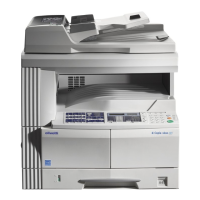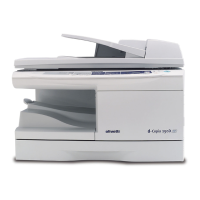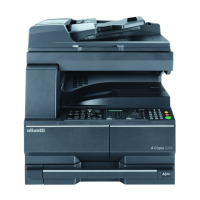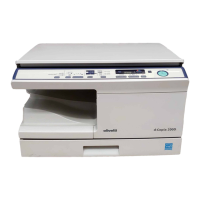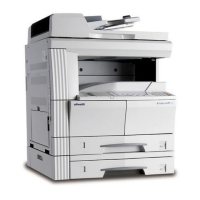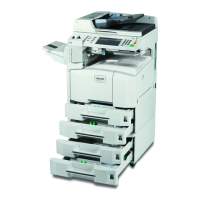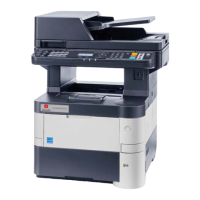d-Color MF4003/MF3303
I SERVICE MODE > 5. Machine
I-10
1. Position the test chart correctly so that the original reference point is aligned with the scale.
2. Press the Start key to make a copy.
3. Check point C on the test pattern.
Enlarged view of the test chart
Y M C
C
M C Y Y M
Color is “hue”,
lightness is “value”,
saturation is “chroma”:
this is the world of color.
Hue
P2 P2
The quality of color which can be
described by words such as red,
yellow, blue etc.
Value
The quality of color which can be
described by words such as light,
dark etc., relating the color to a gray
of a similar lightness.
Chroma
The quality of color which can be
described by words such as vivid,
dull etc., describing the extent to
which a color differs from a gray
having the same value.
P1
1.0
1.1
1.25
1.4
1.6
1.8
2.0
2.2
2.5
2.8
3.2
3.6
4.0
4.5
Y M C
C
M
C Y Y M
1.0
1.1
1.25
1.4
1.6
1.8
2.0
2.2
2.5
2.8
3.2
3.6
4.0
4.5
C
4. If the test pattern falls outside the target, change the setting using the [+] / [-] key.
• If the C width on the copy sample is less than one on test chart, increase the setting.
• If the C width on the copy sample exceeds one on test chart, decrease the setting.
5. Press the Start key to make another test pattern.
6. Check the image on the test pattern to see if the specifications are met.
7. Make adjustments until the targets are met.
5.4.5Sub Scan Zoom Adj.
• To adjust the zoom ratio in the sub scan direction for the scanner section.
• The LED exposure unit or the scanner motor has been replaced.
NOTE
▪ Width D on the color chart and one on the test pattern are measured and adjusted so that the difference of width D satisfies the
the following target shown below.
▪ An adjustment must have been completed correctly of [Printer Area].
Target Setting range Default
Width D: ± 1.0 mm 0.990 to 1.015 (Step: 0.001) 1.000
* Standard size when using a scale: 300.0 mm
<Procedure>
1. Position the test chart correctly so that the original reference point is aligned with the scale.
2. Press the Start key to make a copy.
3. Check point D on the output test pattern.
Enlarged view of the test chart
Y M C
C M
C Y Y M
Color is “hue”,
lightness is “value”,
saturation is “chroma”:
this is the world of color.
Hue
P2
P2
The quality of color which can be
described by words such as red,
yellow, blue etc.
Value
The quality of color which can be
described by words such as light,
dark etc., relating the color to a gray
of a similar lightness.
Chroma
The quality of color which can be
described by words such as vivid,
dull etc., describing the extent to
which a color differs from a gray
having the same value.
P1
1.0
1.1
1.25
1.4
1.6
1.8
2.0
2.2
2.5
2.8
3.2
3.6
4.0
4.5
Y M C
C M C Y Y M
1.0
1.1
1.25
1.4
1.6
1.8
2.0
2.2
2.5
2.8
3.2
3.6
4.0
4.5
D
4. If the test pattern falls outside the target, change the setting using the [+] / [-] key.
• If the D width on the copy sample is less than one on test chart, increase the setting.
• If the D width on the copy sample exceeds one on test chart, decrease the setting.
5. Press the Start key to make another test pattern.
6. Check point D on the output test pattern again.
7. Make adjustments until the targets are met.
5.5Color Registration Adjustment
• To adjust color shift if there is any when comparing the original with copy of the plain or thick paper.
• To correct any color shift.
• This setting can be made independently for each paper type.
Setting item Setting range
Paper type Color selection
Plain Paper/Plain Paper+, Thick Paper Cyan, Magenta, Yellow X -6 to +6 dot (step: 1 dot)
Y -6 to +6 dot (step: 1 dot)
<Procedure>
1. Load manual bypass tray with A4.
2. Press the Start key.
3. On the test pattern produced, check for deviation between the black line and the line of each color at positions X and Y.
4. Select the paper type and color to be adjusted.
5. Using the [+] / [-] key, change the setting value as necessary. (At this time, only the line of the selected color moves.)
• If the cross deviates in the direction of A, decrease the setting.
• If the cross deviates in the direction of B, increase the setting.
6. Produce another test pattern and make sure that there is no deviation.

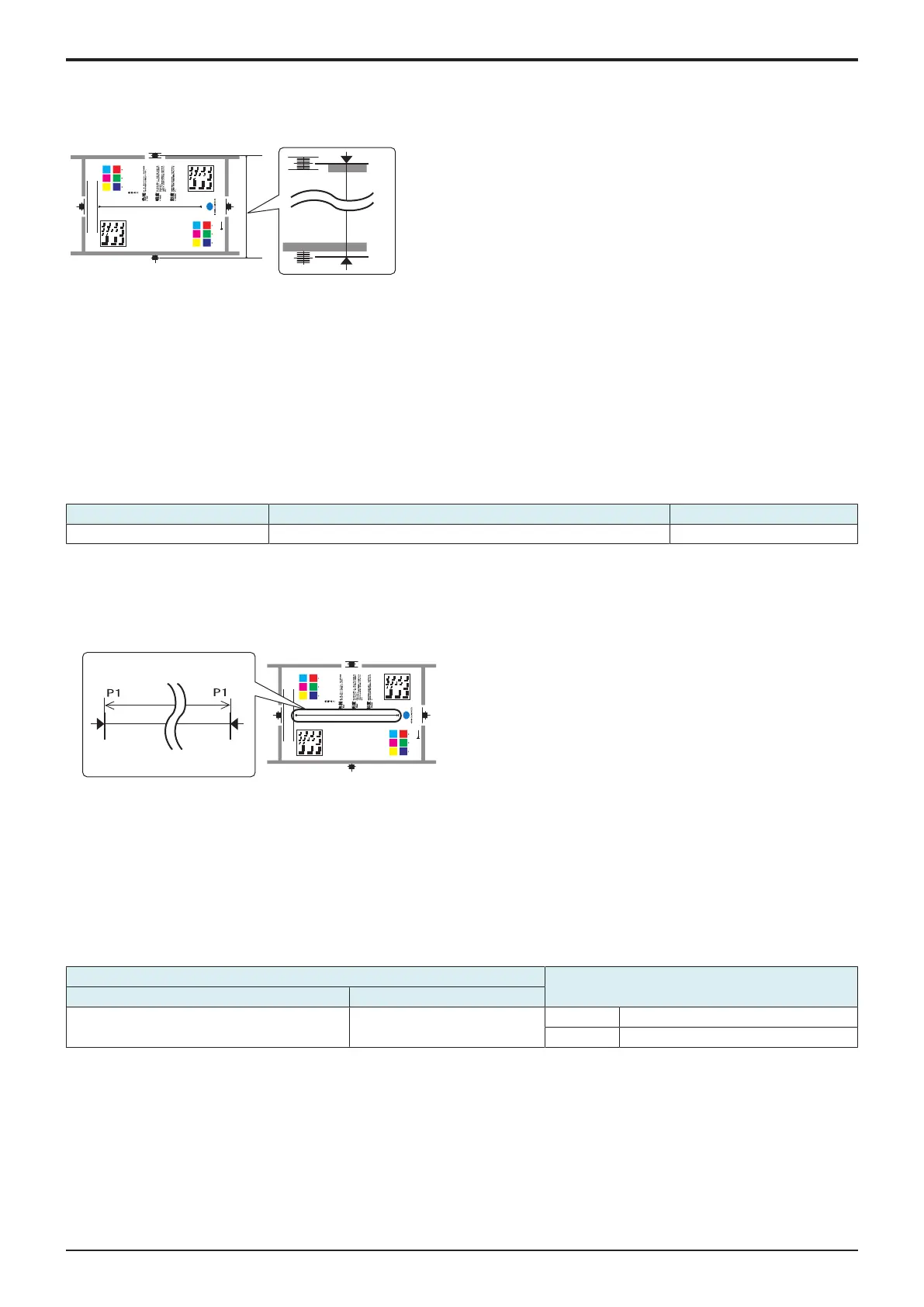